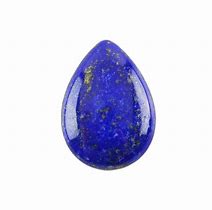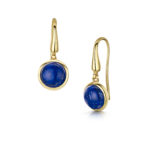

LAPIS LAZULI KEY FACTS
• Hardness is 5.5 on the Moh’s Scale
• Can be found in Argentina and Afghanistan
• Thought to protect against evil
GENERAL INFORMATION ON LAPIS LAZULI
Ultramarine was the original name for Lapis Lazuli when it was initially introduced to Europe because of its deep blue colour. It changed to Lapis, which is Latin for stone and Lazuli, which is Latin for blue or heaven.
Lazurite, Sodalite, Hauyne, Calcite and Pyrite all make up the stone Lapis Lazuli or Lapis. The best quality Lapis is one where the intensity of the colour blue is deepest with small spots of white calcite and lines or veins of bright yellow pyrite. It’s crystal structure is various and its lustre is vitreous to greasy. It is 5.5 on Moh’s scale.
Argentina and Afghanistan provide the best location for the highest quality Lapis Lazuli. The boulders or rocks of limestone in which lapis is formed are cut open and ground down to give a flat surface. The mask of Tutankhamun is one of the most famous examples of carved Lapis. Russia, Canada and Chile are localities, which produce a pale blue Lapis. In America it is darker.
Imitation Lapis, has been produced by Pierrre Gilson in France – however, it is softer. Stained Jasper and paste with copper inclusions are examples of other copies of Lazuli.
Cuts include: Cabochon, Cameo and Polished.
A wearer of Lapis Lazuli will be protected from evil.

